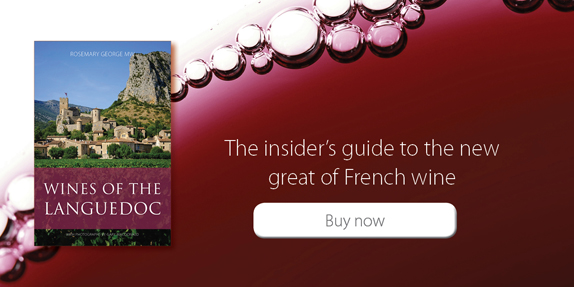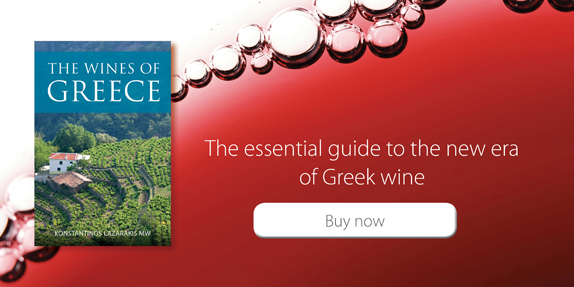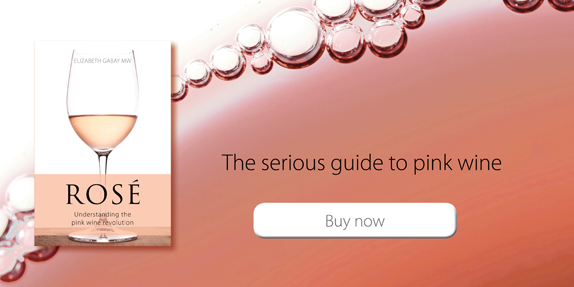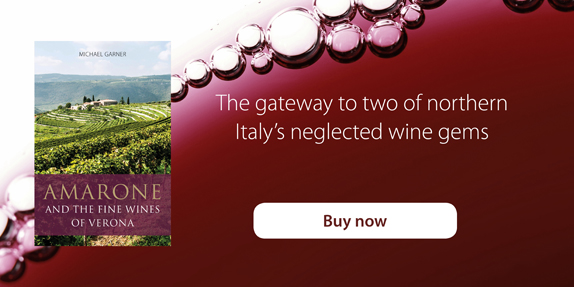Wine and spirits
Unwrapping the Languedoc – the passionate people behind a new great region
27 April 2018 by Rebecca in Classic Wine Library, Wine and spirits
Where else in France could you expect to find spicy red wines, one of today’s most fashionable whites, sweet vins doux naturels and the world’s oldest sparkling wine? As the world’s sixth or seventh largest wine producer, the Languedoc, in the sunny south of France, has a lot going for it today but until as little as 40 years ago most of its output was dismissed as rustic table wine.
The change in the region’s reputation has been brought about by its wine producers – committed and experienced winemakers who care about both their wines and the perception of the region as a whole. In Wines of the Languedoc, the latest book from The Classic Wine Library, Rosemary George MW tells the story of the Languedoc in the twenty-first century through the voices of the people who have made it the wine lover’s treasure trove we see today. Why write about the Languedoc now? ‘Quite simply, and without exaggeration, it is the most exciting wine region of the whole of France. The pace of change in the past few years has been breathtaking,’ says George.
Many of today’s producers come from vine growing or winemaking languedocien families but some have been drawn here from other parts of France and from around the world by the region’s affordability, welcoming attitudes and the freedom its appellation system gives to those wishing to experiment. The approaches to viticulture and winemaking here are as varied as the landscape, which includes the rugged Corbières in the west, the distinctive Pic St Loup, the national park of the Cévennes and of course the blue sparkle of the Mediterranean. As George notes, the region is ‘a vibrant melting pot of dynamic attitudes, with an extraordinary enthusiasm and energy amongst the wine growers. I have lost count of the times somebody said: “C’est ma passion” … they simply could not imagine doing anything else, and they are all making the very best wine they can.’
One winemaker puts the region’s recent success down to ‘self-confidence’, as producers learn to trust their own terroir rather than trying to emulate other great regions such as Bordeaux and Burgundy. Another thinks that the change in attitude can be summed up as ‘professionalism’. There has certainly been a move in the region to work with the land and its challenges, including water shortage and increasingly hotter summers. With over one-third of France’s organic vineyards located in the region, improvements have focused on variety selection, vine development and novel approaches to vineyard management, including one producer who has installed solar panels to shade his vines as well as generating energy.
George has visited, chatted to and tasted with over 200 of the Languedoc’s most interesting producers, to really get to the heart of what makes the place so special. Wines of the Languedoc is a fascinating account of a region in the ascendant.
Review copies available from marketing@infideas.com
Sun, sea and Savatiano: why the future looks bright for Greek wine
22 January 2018 by Rebecca in Classic Wine Library, Wine and spirits
Be honest, when was the last time you picked up a bottle of Greek wine in your local wine shop or at the wine merchant? If you never even consider buying Greek wine except on holiday in Greece you are not alone. Many of us think of retsina and ouzo – and don’t want to drink either – when the subject of Greek alcohol is raised. Although Greece has the longest winemaking tradition in Europe, and made some legendary wines in Classical times, the wines produced for most of the modern era have not been of a high quality. But a new book by Greece’s first Master of Wine, Konstantinos Lazarakis, claims that today’s Greek wine is exciting, innovative and really rather good.
The Greek wine industry really only began in earnest after the Second World War. Prior to that most of Greece’s population was rural and wine production was small-scale, grown for personal consumption. Grapes grown commercially were used for raisins or sold at a subsidised rate to cooperatives for the production of bulk wine – quality and craftsmanship were not major considerations. From the 1950s onwards a few cult wines and boutique wineries began to emerge but it wasn’t until the 1970s, as Greece began the process of joining the EEC, that the wine industry of today started to take shape. Led by Greek wine’s own Iron Lady, Stavroula Kourakou-Dragona, wine appellation legislation was drawn up. Since then a series of miniature revolutions has led to a flourishing industry – with viticulture the healthiest agricultural sector in the country.
As Lazarakis says, “The image of Greek wine has shifted beyond my imagination. In the past I was trying to convince people that Greece can produce great wines; now that fact is clear, my job has been to explain why these wines are great. Writing this book has been a privilege.”
Growing conditions in Greece mean that vine growers and winemakers have always had to be inventive. With prime agricultural land in short supply, grapes tend to be grown in the places where more essential crops don’t flourish. In some places, such as the island of Santorini, where the winds make growing anything taller than half a metre impractical, this means that growers have had to invent new vine-training systems. This adaptability and innovativeness shows through in the sheer variety of wines available across the country.
And as for the retsina? Even that has improved vastly, with producers such as Stelios Kechris, in Thessaloniki, devoting themselves to producing groundbreaking resined wines.
For anybody interested in changing their preconceptions of Greek wine The wines of Greece is a mine of information. Lazarakis is proud of what his country’s wine producers have achieved and this shows clearly as he takes us through the history of wine growing in Greece, the varieties grown and the conditions they are farmed in. Most of all it is demonstrated through the stories of the people of the wine industry – the producers who create the stunning wines available today.
Will 2018 be the year rosé gets serious? Why it’s time to rethink pink.
9 January 2018 by Rebecca in Classic Wine Library, Wine and spirits
Rosé wine suffers from an image problem. For many years it has been thought of in wine-appreciation circles as the poor relation of its seemingly more complex and refined red and white cousins. The perception amongst consumers tends to be that rosé is a fun, easy-going wine, perhaps more suited to novice wine drinkers than those who appreciate fine wine. Even amongst producers it has often been just an afterthought or by-product – if they produce a pink wine at all.
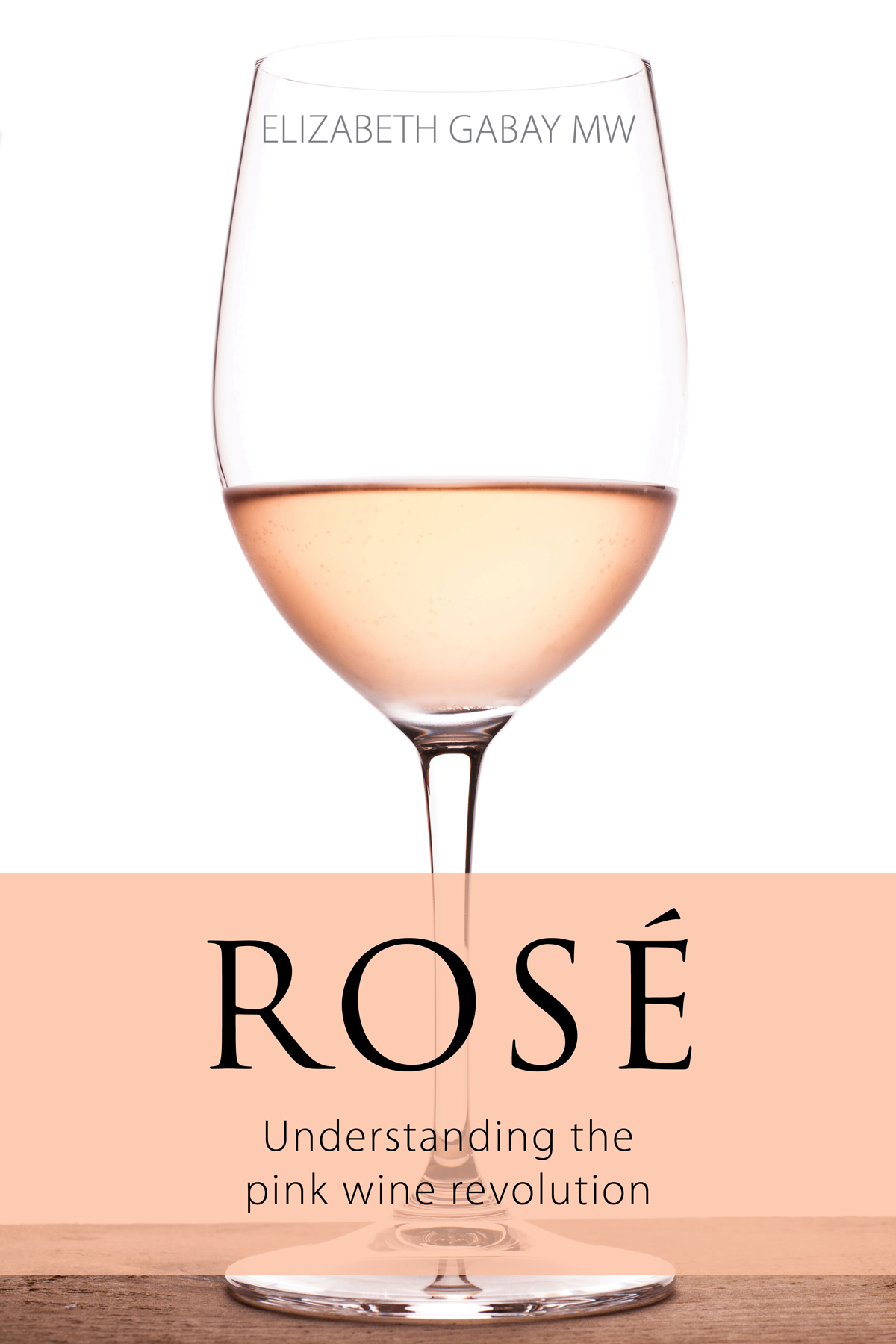 However, rosé is in the middle of a renaissance, and as a new book by Master of Wine Elizabeth Gabay argues, this surge in popularity goes beyond a fashion for all things pink. In Rose: Understanding the pink wine revolution, Gabay puts forward a case for rosé as a serious, nuanced and complicated wine category. While the undemanding summer pinks may be a passing trend there is a whole other world of rosés, made by innovative producers aiming to create wines with as much finesse as their reds and whites, and these wines are here to stay.
However, rosé is in the middle of a renaissance, and as a new book by Master of Wine Elizabeth Gabay argues, this surge in popularity goes beyond a fashion for all things pink. In Rose: Understanding the pink wine revolution, Gabay puts forward a case for rosé as a serious, nuanced and complicated wine category. While the undemanding summer pinks may be a passing trend there is a whole other world of rosés, made by innovative producers aiming to create wines with as much finesse as their reds and whites, and these wines are here to stay.
Many experienced wine drinkers may have been turned off rosé after parties in their student days spent drinking too much Mateus or inferior quality white Zinfandel. The more savvy amongst us may be aware that twenty-first century rosé is different and that the favoured style is now drier, leaner and paler. This style of rosé originated in Provence. With that region’s Château d’Esclans marketing its ‘Garrus’ wine as the most expensive rosé in the world and big Hollywood names investing in Provence rosé brands it was almost inevitable that around the world imitations would spring up. But the story of rosé’s revival goes beyond one regional style.
While the pale rosés of Provence may have started the current pink wine trend they are not the only interesting wines out there. Gabay has tried a huge number of rosés in different styles from all corners of the globe. While the large number of bottles arriving at her door did give Gabay’s postman cause for concern, tasting them made Gabay enthusiastic in her appreciation of rosés of many hues and styles. She suggests that producers, buyers and consumers alike should broaden their minds about what these wines can be in order to appreciate fully what rosé has to offer. She says, ‘For producers there is no single recipe for commercial success – all kinds of rosé can sell in the right market. For wine merchants, the possibility for a diverse range of wines can potentially expand sales, although consumer education may be required. To consumers I would say be bold. Some of the flavours in serious rosé are unlike any others so take your time and savour their uniqueness.’ Arguably the pink wine revolution is only just beginning.
Rosé: Understanding the pink wine revolution is the first English-language book to scrutinize thoroughly the subject of pink wine. Join the author as she uncovers previously unknown rosés, including those known only to locals and some not available to the public, prised out of the hands of producers. With the world of rosé unlocked for them readers will be inspired to journey beyond the book and make their own discoveries.
Elizabeth Gabay MW has been in the wine trade since 1986. She has written about and lectured on rosé wines extensively, and has judged at Decanter’s annual World Wine Awards as well as at many other competitions, including the Mondial de Rosé, the Guide de Vins de Provence and for magazine panel tastings for Decanter and Drinks Business.
All things appassimento
21 December 2017 by Rebecca in Classic Wine Library, Wine and spirits
By Michael Garner, author of Amarone and the fine wines of Verona
The history of producing wine via what the Veronesi refer to as the appassimento process (drying the fruit for several months prior to vinification) dates back to Roman times. Until as recently as the Second World War however, that wine was known as Recioto della Valpolicella (or Soave) and invariably sweet! There is some evidence to suggest that experiments with drier styles have been carried out since the latter half of the nineteenth century, but Amarone was pretty much unheard of before the 1950s. Indeed until 1990 and the arrival of its own DOC, the wine was still referred to as Recioto Amarone della Valpolicella and considered in some quarters as an unwelcome aberration! It’s a similar story with Ripasso. Nowadays the term refers mainly to a wine which has been refermented on the lees of a recently racked Amarone; traditionally Recioto lees (much richer in sugars) were used to boost the substance and structure of wines made from freshly picked grapes which were then sold on locally as ‘half’ or ‘second’ Recioto.
Ripasso has only been recognized under DOC legislation for the last ten years (and was granted its own DOC as recently as 2010). Nowadays, such has been its stellar rise to fame, four out of ten bottles of red wine produced under the various DOC(G) disciplines of the Valpolicella region are labelled Ripasso. Given this astonishing commercial success, buying good Ripasso is quite a minefield; with everyone chasing a slice of the pie, quality can be very uneven. For a taste of the ‘original’ style, a diehard few (Monte Delora’s Sausto or Recchia’s Le Muraie, for example) still use Recioto lees, otherwise the safest bet is generally to go for a wine which has undergone a relatively short refermentation (e.g. Ca La Bionda’s Malavoglia or Speri) where the fruit wins out. Stefano Accordini, Begali, Guerrieri Rizzardi and the Cantina di Negrar are also very reliable. Wines that spend longer (two weeks and more) in contact with the lees often run the risk of drying out, and can start to taste raisiny and volatile.
Amarone too has come a long way in a short time. Many of the well-established houses, Allegrini, Bertani, Masi, Speri and Tedeschi produce textbook examples. Other names worth watching among the many smaller houses newer to the bottled wine scene, are La Brigaldara, Rubinelli Vajol, Le Salette, Scriani, Secondo Marco, Tenuta Sant’Antonio, Terre di Leone, Venturini, Viviani and Zyme. Just recently I’ve been really impressed with the Villa Spinosa wines too – they have a notably authentic and distinctive character. Many of these firms produce a number of different cuvées: Masi for example make a number of single vineyard wines, which is a great opportunity to look at the individual characteristics that different sets of growing conditions give rise to. Cantina di Negrar’s Espressioni range of Amarone from each of the five individual communes of the Classico area is maybe the very best way of getting to grips with this fascinating subject: every wine is vinified in precisely the same way by the same winemaker. It really is the vineyard site that makes the difference therefore!
Though produced in much smaller quantities these days, the Recioto wines are more than just curiosities. Virtually every winery keeps the tradition alive even though sweet red wines might be difficult to sell. A slightly drier style known as Amandorlato (‘almond-like’) is worth hunting for – Masi and Le Ragose produce excellent examples (when conditions permit). However, Recioto di Soave is the wine that too often passes under the radar these days. It can be utterly delicious, and isn’t a sweet white wine so much easier to get your head around as well? Fruit is often exposed to the effect of noble rot during appassimento so there’s a unique ‘double concentration’ going on which means that the wines can have extraordinary depth of aroma and flavour. Again, these are not easy to find but worth seeking out: great examples are produced by Coffele, Gini, La Suavia and Nardello. I like the Pieropan version too (Le Colombare) which has more of a bittersweet character. A glass of passito wine is such a great way to round off a meal!
Ageworthy and aspirational Veronese wines
15 December 2017 by Rebecca in Classic Wine Library, Wine and spirits
By Michael Garner, author of Amarone and the fine wines of Verona
At the height of their popularity in the 1970s and 1980s, Soave and Valpolicella were viewed as simply cheap and cheerful wines, a reputation founded on widely available ‘generic’ examples bought and sold on price alone and produced by the cooperatives and larger negoziante houses that dominated production at the time. Ironically this was also the period that saw the emergence of Pieropan and Quintarelli – today’s role models for the many smaller growers determined to set the record straight and present Soave and Valpolicella in a different light. An integral part of their strategy has been the focus on highlighting wines from the finest vineyards as a way of demonstrating the area’s true potential.
Pieropan’s Calvarino had its first bottling in 1971 and has gone on to redefine what Soave is all about. While much of today’s Soave favours the Garganega grape, Calvarino makes use of the maximum 30 per cent of Trebbiano di Soave the law allows in the blend and is fermented and aged in cement tanks only. Other unoaked styles of Soave which champion scintillating freshness and ‘purity’ also include Trebbiano di Soave – Coffele’s Ca Visco and Nardello’s Vigna Turbian – but a substantial number are pure varietals, such as Suavia’s Monte Carbonara, i Stefanini’s Monte Fico and Fornaro’s Capitel del Tenda. All use a period of extended lees contact for greater richness and substance, which partly explains one of their more surprising features, the fact that these wines are capable of not only lasting but even developing in bottle for a decade or more, when their beautifully defined fruit aromas and flavours take on preserved and candied notes without compromising that essential freshness and verve. Equally ageworthy are the more traditional wood-matured versions of Soave: before cement and then stainless steel was introduced into the area (less than one hundred years ago) the wines were routinely fermented in barrels. A few that maintain this tradition are rightly recognized as icons: Gini’s Salvarenza, Pieropan’s La Rocca and Inama’s two versions of Soave from vineyards on the renowned Foscarino hillside. On the whole botte is preferred to barrique these days. While all the above wines are produced in the Classico area, wonderful wood-aged Soave from the wider DOC area includes Roccolo Grassi’s La Broia or Corte Giacobbe’s Runcata (fermented and matured in acacia barrels).
A slightly longer tradition of single vineyard bottlings exists in Valpolicella (Masi for example record first bottling their ‘cru’ Amarone Camplongo di Torbe in 1958). Amarone aside, most of the single vineyard bottlings encountered on today’s market belong to the Superiore category. The highly flexible framework for production which stipulates little more than a minimum ageing period, a minimum alcohol content and lower yields than the vino d’annata style, allows winemakers free rein to express themselves. Some prefer to work with grapes that have undergone a shortened version of the appassimento process (Speri’s Monte Sant’Urbano, Mirko Sella’s Le Alene and the Cantina di Negrar’s Veriago are all made from 100 per cent semi-dried grapes), a mix of fresh and dried fruit (Masi’s Monte Piazzo) or entirely freshly-harvested, often later-picked grapes (Monte Dall’Ora’s Camporenzo or Corte Sant’Alda’s Mithas). Most spend at least 12 months in wood. Though this denomination is less familiar and much less widely available than either Vino d’Annata or Ripasso, some of the very finest red wines in the Veronese fall within this category. It has the added advantage of being much more of a food friendly wine than Amarone and can age beautifully. On the whole Superiore is a vastly more reliable wine than Ripasso, which is in grave danger of becoming as over-stretched as those cheap and cheerful wines from several decades ago, largely because of its recent runaway success. My tip: Valpolicella Superiore is the Veronese red to watch for the future! And on that bombshell …
Next time: Ripasso, Amarone and Recioto – wines derived from the appassimento process.
The good news from Soave and Valpolicella
7 December 2017 by Rebecca in Classic Wine Library, Wine and spirits
By Michael Garner, author of Amarone and the fine wines of Verona
As many growers in the viticultural Veronese will tell you, it’s the wines made from freshly picked fruit that will tell you the most about the area’s unique growing conditions. So it’s time to turn aside from the appassimento frenzy for a moment and consider what’s been happening recently with good old Soave and Valpolicella. Remember them?
The news couldn’t be much better. The warmer summers of the last 20 or so years have led to a succession of early vintages when bringing in a fully-ripe crop of fruit has no longer been the worry it once was. Franco Allegrini for example argues that 2003 was the only vintage since the turn of the millennium in which a harvest did not achieve full phenolic ripeness. Soave and Valpolicella have been transformed as a result.
While a lot of simple Soave DOC is still a price-fighting line for many supermarkets, look a little further beyond these negoziante and co-operative sourced wines, and you’ll see growers like Marco Mosconi, Agostino Vicentini and Tenuta Sant’Antonio (all around Colognola ai Colli) producing delightfully drinkable examples with real style. Further over to the east around Ronca on the slopes of Monte Calvarina, the vineyards are sited on volcanic, basalt-based soils where a number of smaller houses – Franchetto, Corte Giacobbe, Corte Moschina, Sandro De Bruno, Fattori and Gianni Tessari – are forging a new sense of identity for the area with a series of impressively fresh, mineral-toned wines. Lying in between these two areas is Classico, where again, the wines have never been better. Widely available examples of the simple Classico DOC from the big guns – Ca Rugate, Gini, Inama, Pieropan, etc – are as reliable as ever, while some of the smaller, for now lesser-known, estates such as Coffele, Balestri Valda and Le Battistelle for example, are making wines of stunning purity and balance. Best of all is the fact that at this introductory level the wines are ridiculously underpriced for the quality they offer.
Valpolicella is also undergoing a serious makeover. The eastern part of the area (overlapping with Soave) is the source of some lovely, fresh, juicy reds brimming over with red cherry and hedgerow fruit flavours: Marco Mosconi’s Montecurto, Corte Sant’Alda’s Ca Fiui, Ca Rugate’s Rio Albo, Graziano Pra’s Morandina and Marion’s Borgo Marcellise are all fine examples. In Classico, famous names like Allegrini, Masi, Speri and Tedeschi, for example, make highly approachable versions of the simple Classico DOC which do not want for tipicita but here too newer styles are emerging which focus on conveying a real sense of place in an authentic and sometimes uncompromising manner. The Vaona family at Novaia in the Marano valley and Rubinelli Vajol in nearby San Pietro in Cariano are producing vini d’annata (the youthful wine from the most recent vintage) in a pale, aromatic, incisively fresh style which is brilliant with all manner of foods. Meanwhile examples from Villa Spinosa, Lorenzo and Cristoforo Aldrighetti or Secondo Marco (who gives his simple Classico a short period of ageing in botte) offer a fearless interpretation of the new tipicita in a more hardcore style. If a fuller, riper wine is more your thing, then look for the simple Classico from Accordini, Ca Nicolis or Begali. Uniting these varying approaches is a determination to uncover the subtle nuances that distinguish the different growing areas: Viva la differenza!
Next time: the ‘ageworthy and aspirational’ reds and whites of the two denominations

